Charles E W Bean, Diaries, AWM38 3DRL 606/60/1 - September - October 1916 - Part 4
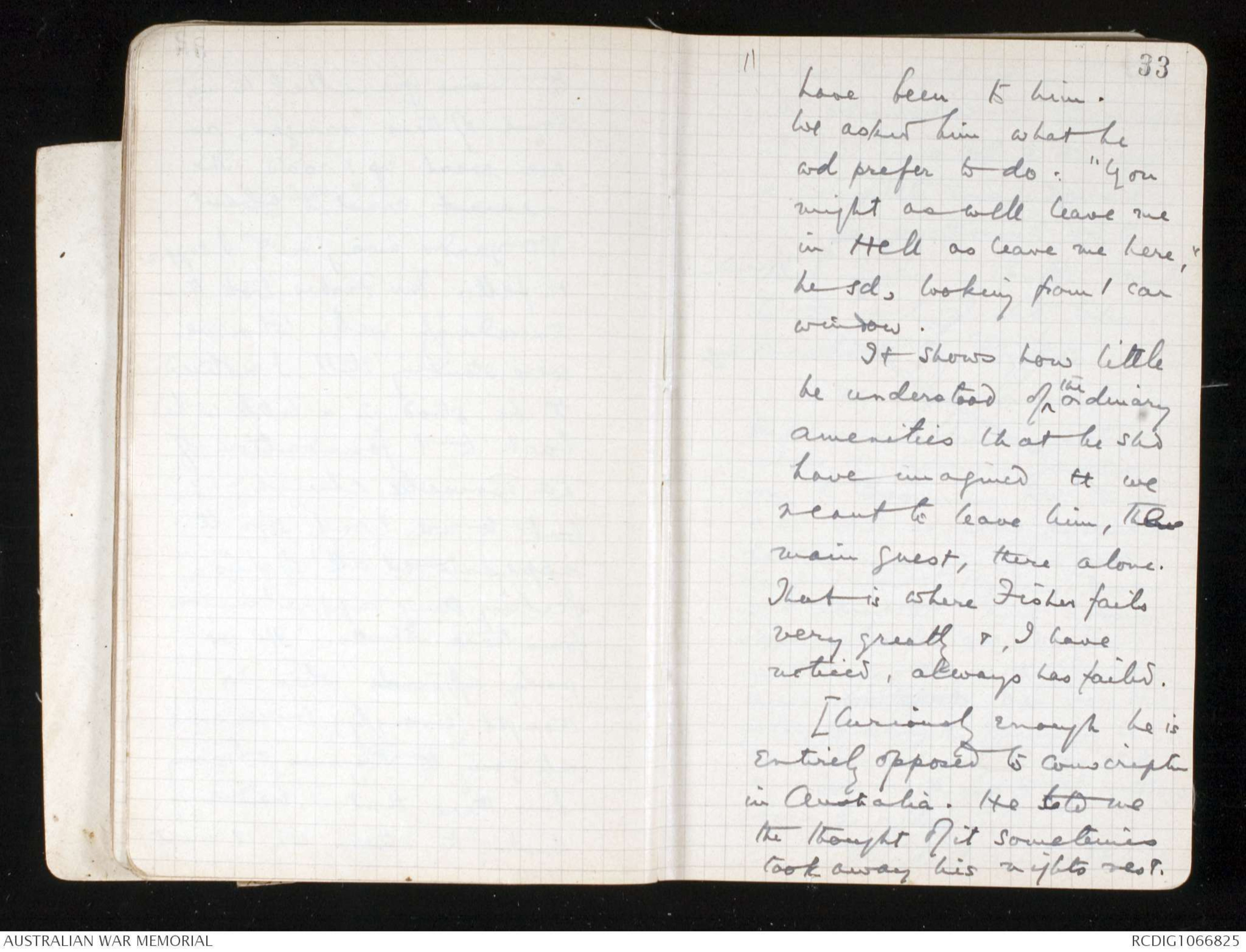
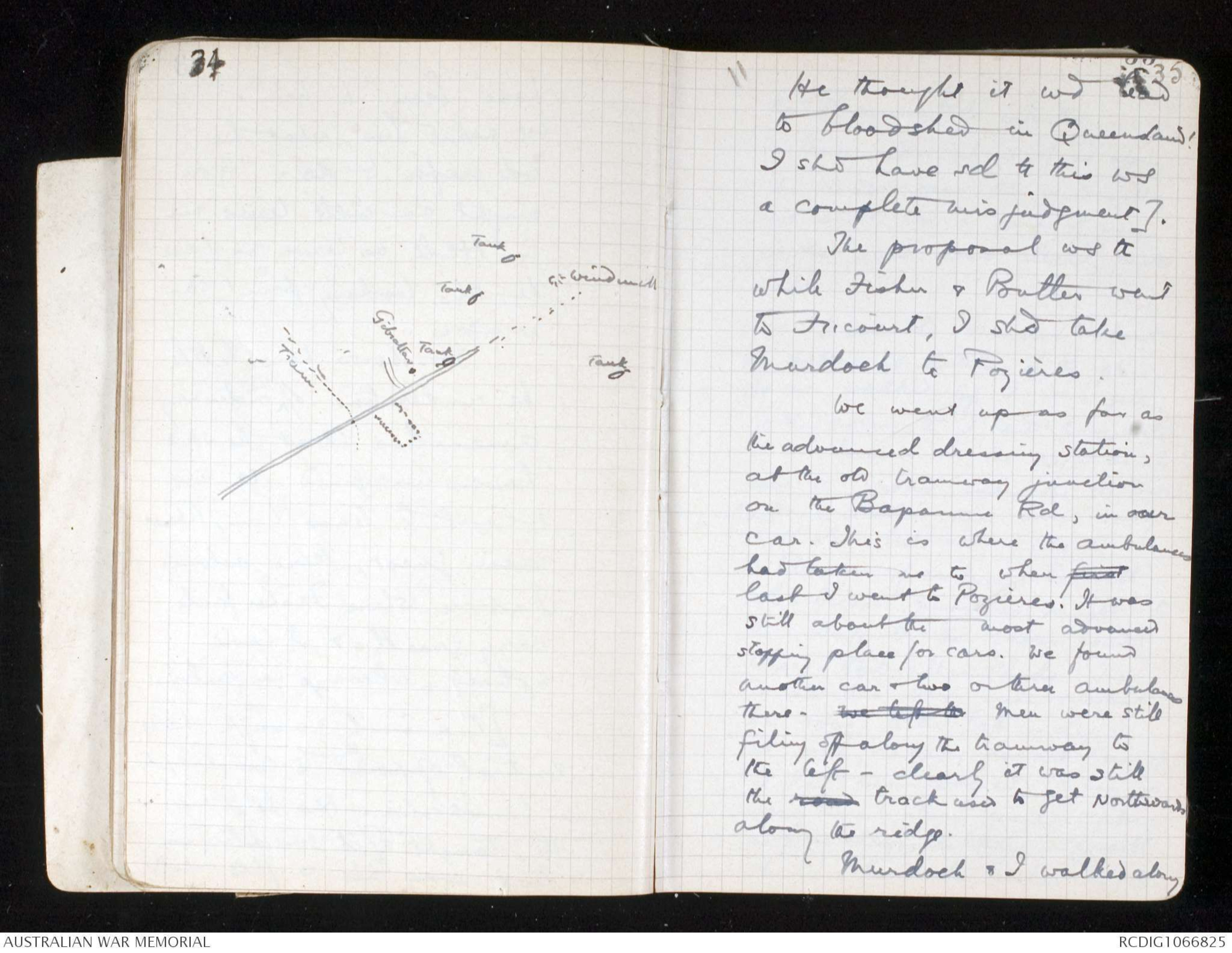
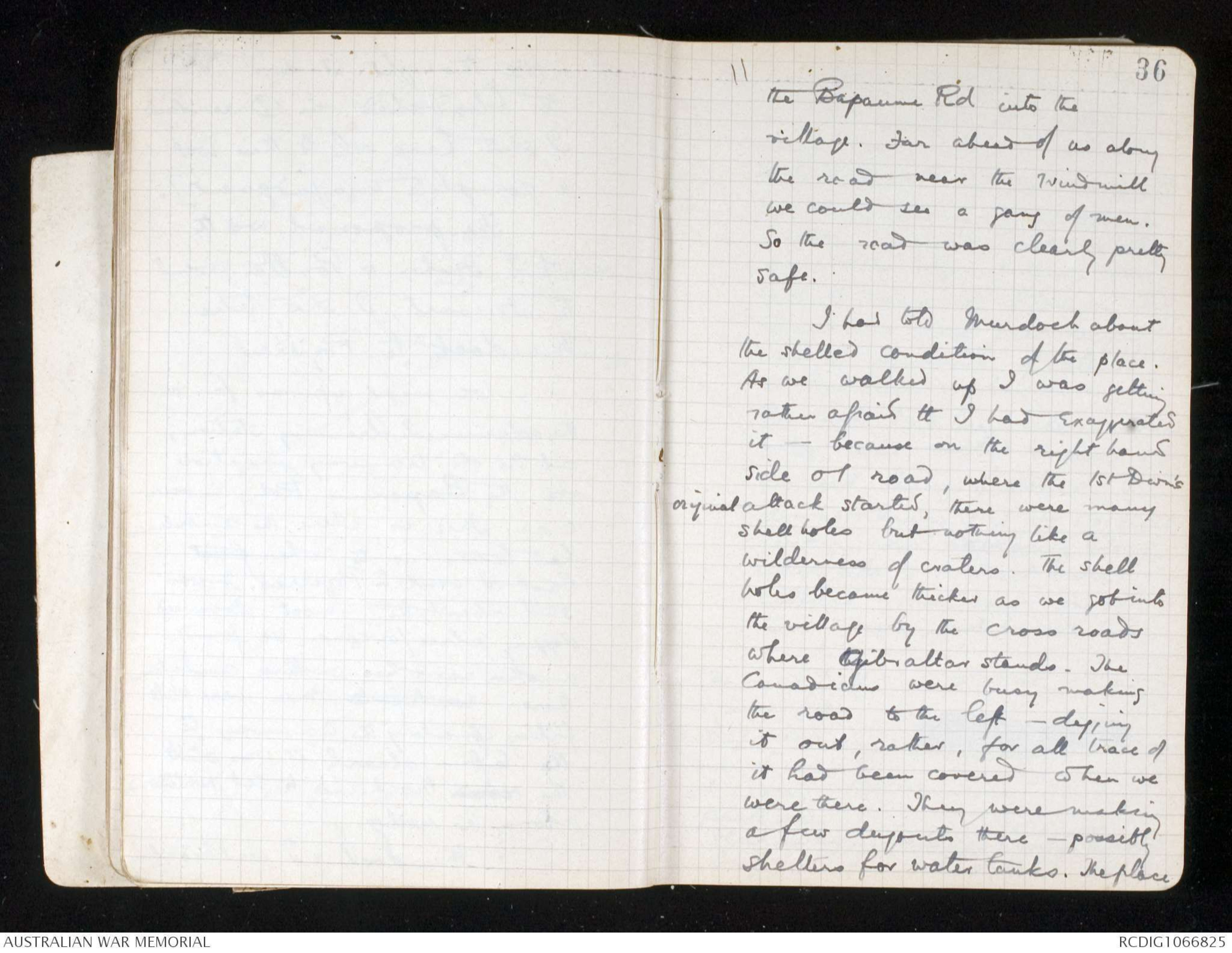
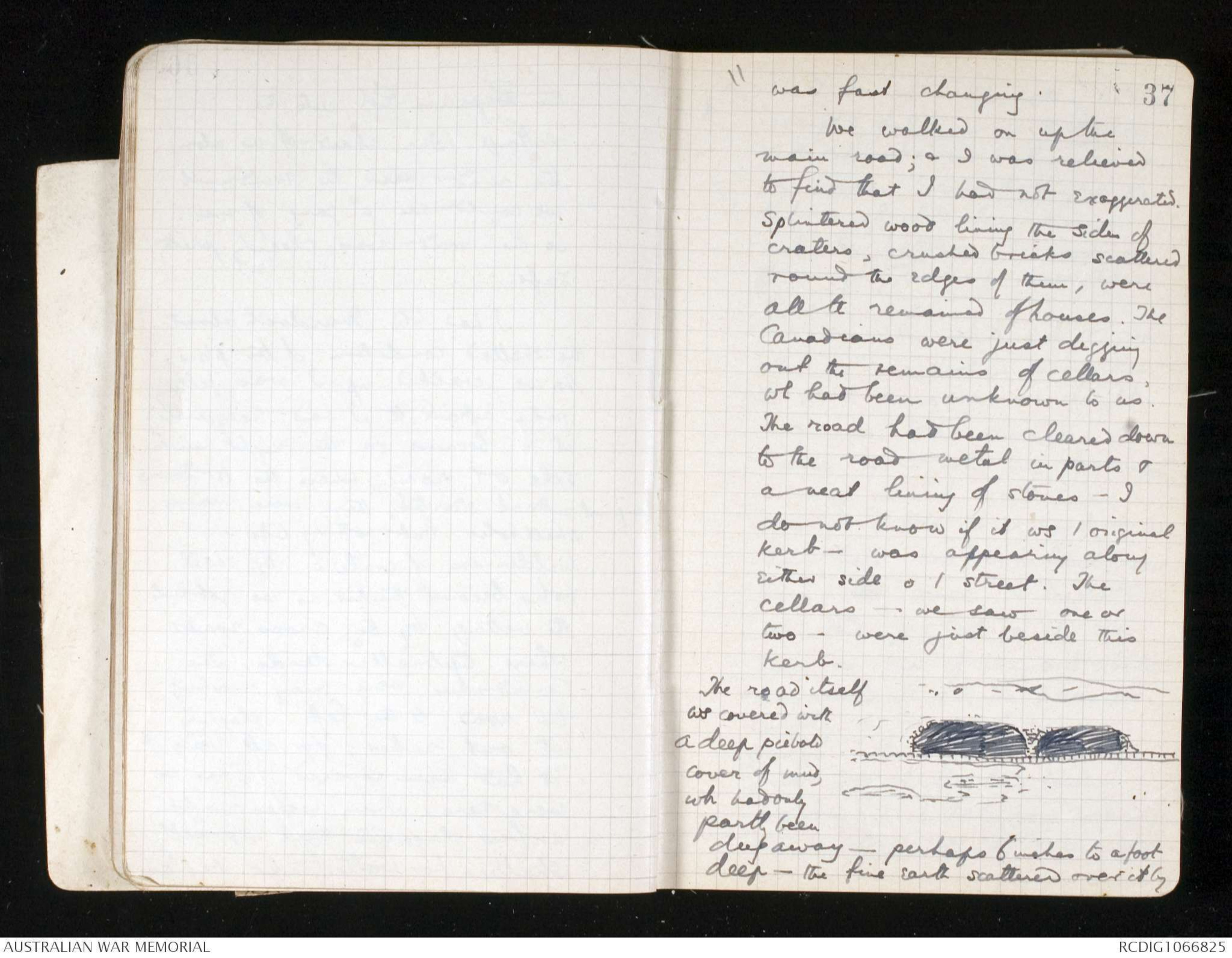
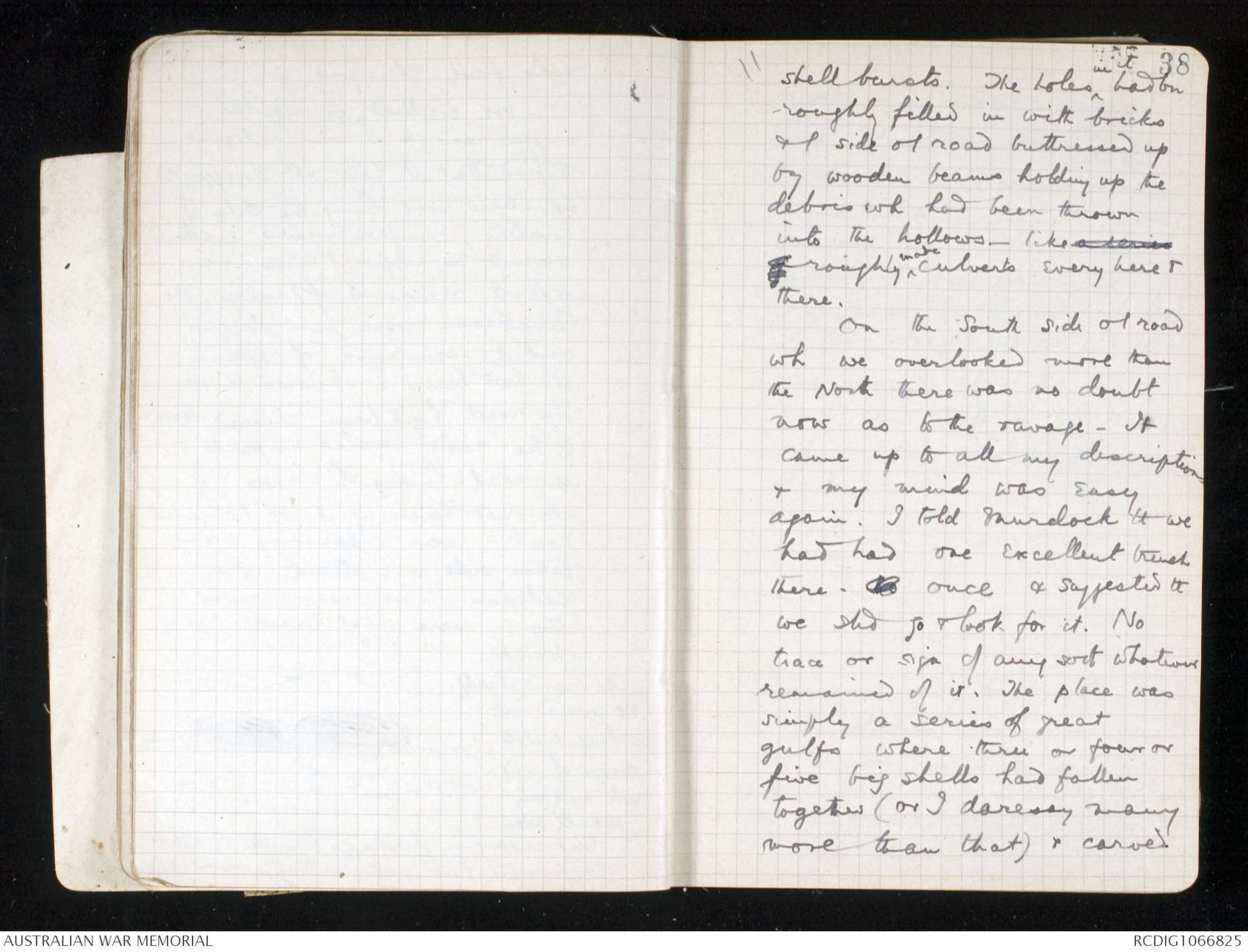
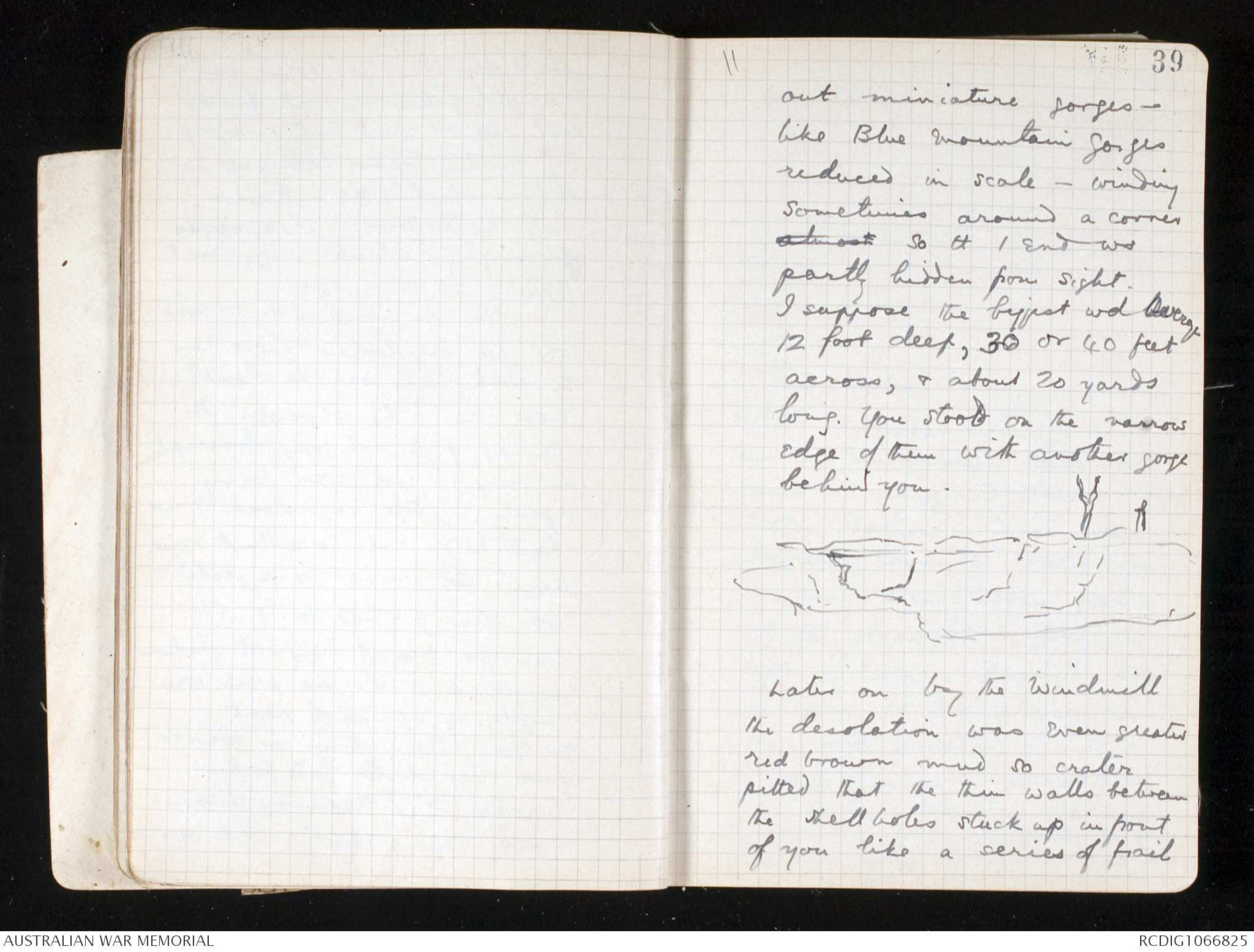

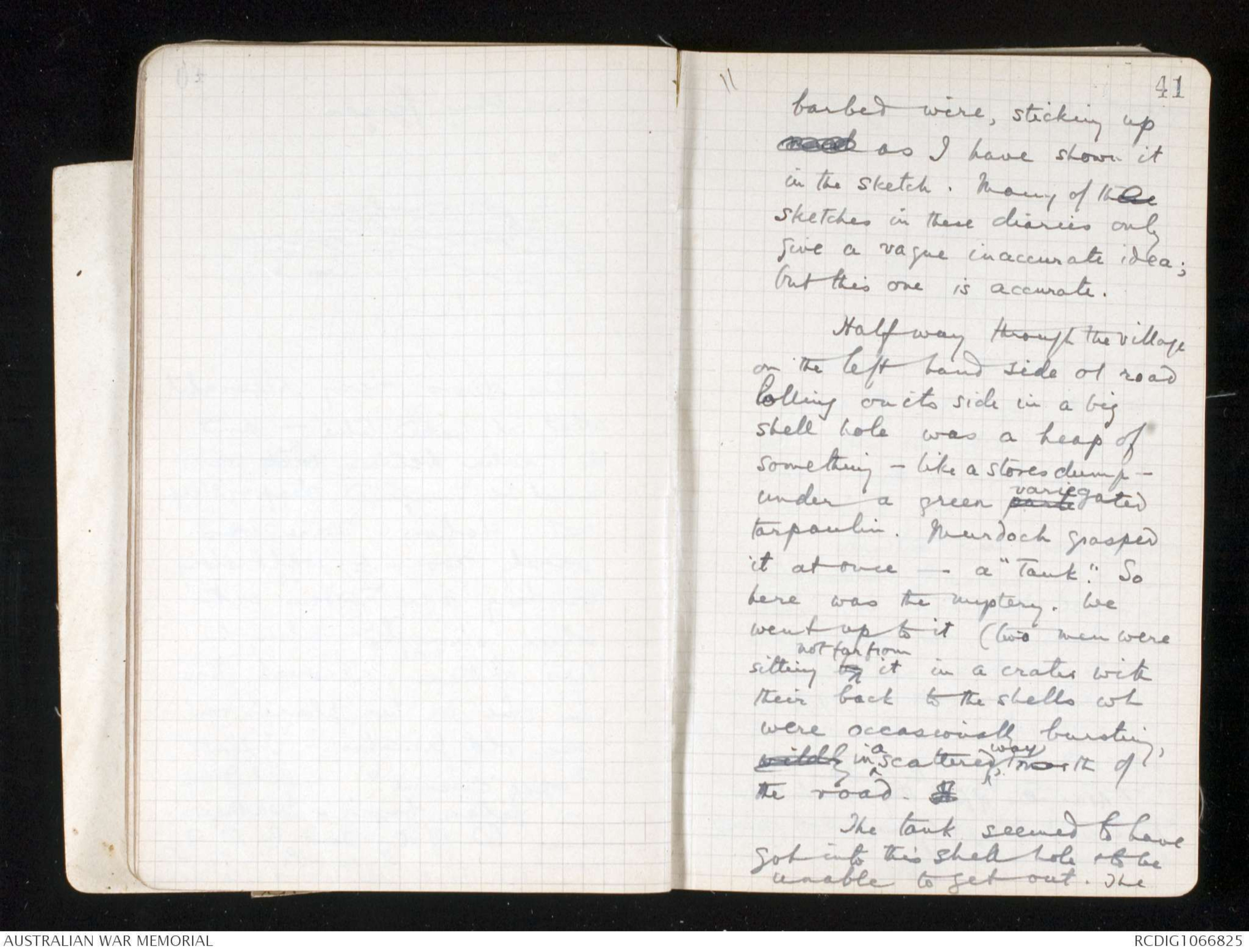
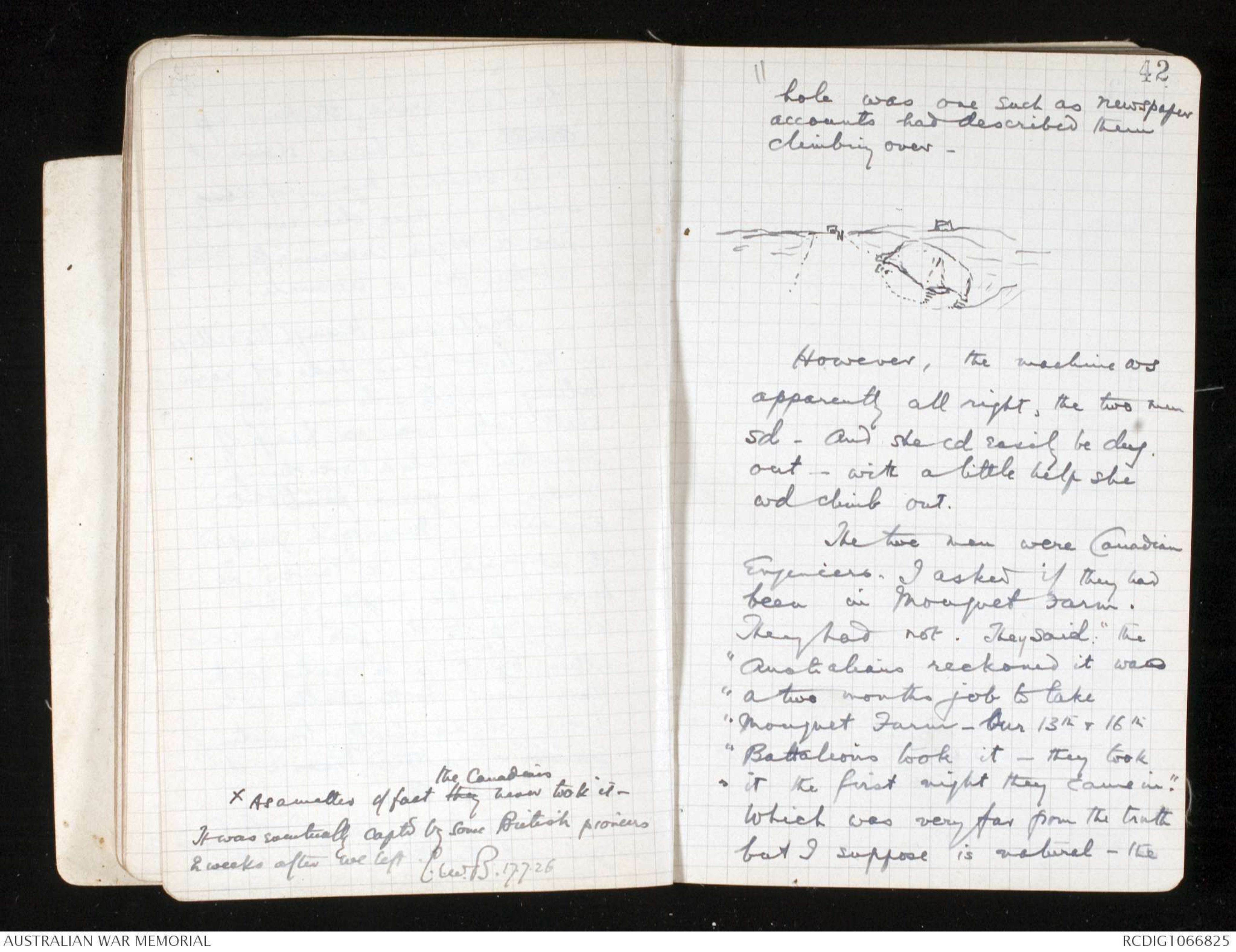
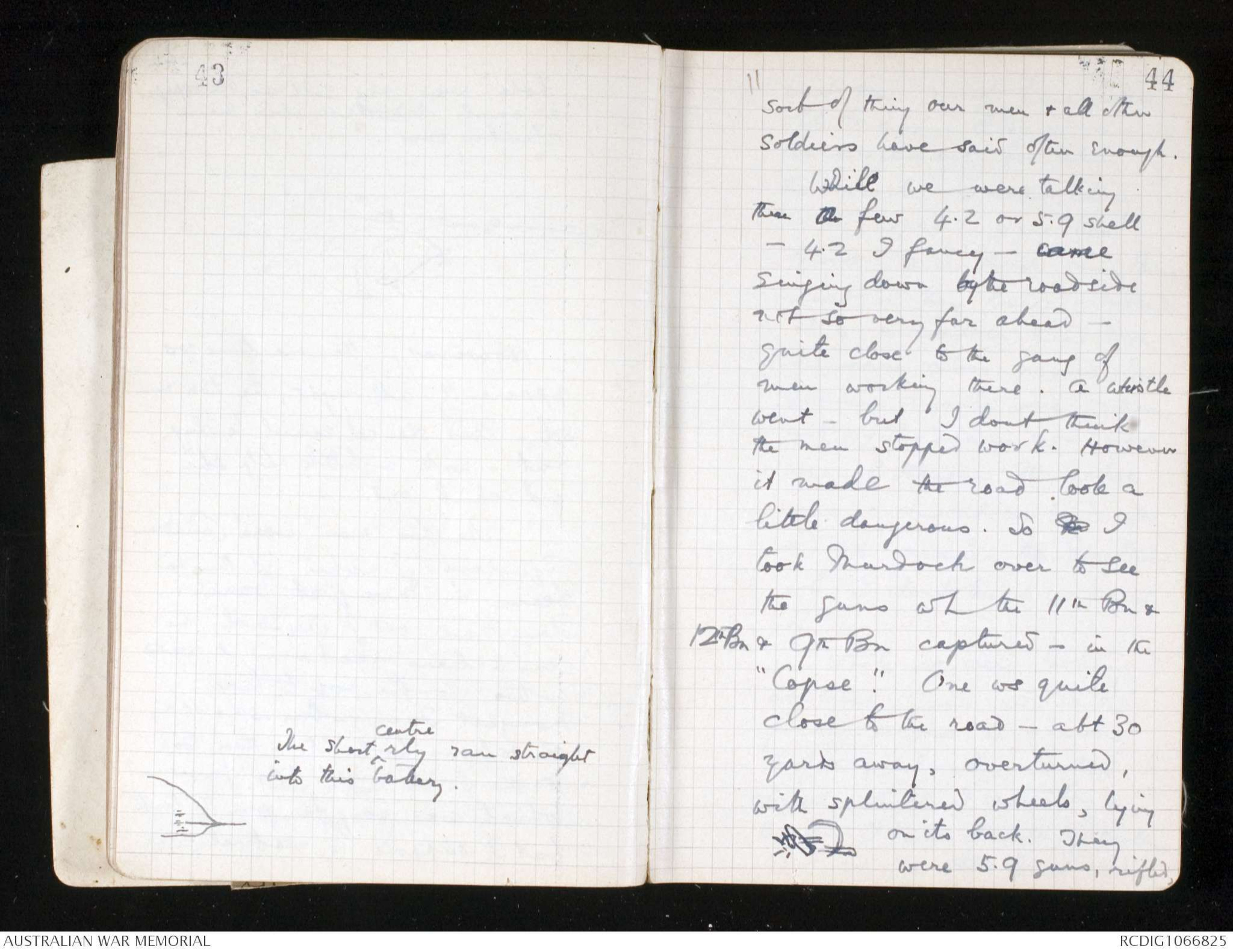
11 33
have been to him.
We asked him what he
wd prefer to do. "You
might as well leave me
in Hell as leave me here,"
he sd, looking from / car
window.
It shows how little
he understood of ^the ordinary
amenities that he shd
have imagined tt we
meant to leave him, Their
main guest, there alone.
That is where Fisher fails
very greatly &, I have
noticed, always has failed.
[Curiously enough he is
entirely opposed to conscriptn
in Australia. He told me
the thought of it sometimes
took away his nights rest.
34
[Hand drawn map, please see original]
11 35
He thought it wd lead
to bloodshed in Queensland!
I shd have sd tt this ws
a complete misjudgement].
The proposal ws tt
while Fisher & Butler went
to Fricourt, I shd take
Murdoch to Pozieres.
We went up as far as
the advanced dressing station,
at the old tramway junction
on the Bapaume Rd, in our
car. This is where the ambulances
had taken me to when first
last I went to Pozieres. It was
still about the most advanced
stopping place for cars. We found
another car & two or three ambulances
there- We left the Men were still
filing off along the tramway to
the left - clearly it was still
the road track used to get Northwards
along the ridge.
Murdoch & I walked along
11 36
the Bapaume Rd into the
vlllage. Far ahead of us along
the road near the Windmill
we could see a gang of men.
So the road was clearly pretty
safe.
I had told Murdoch about
the shelled condition of the place.
As we walked up I was getting
rather afraid tt I had exaggerated
it - because on the right hand
side of road, where the 1st Divn's
orginal attack started, there were many
shell holes but nothing like a
wilderness of craters. The shell
holes became thicker as we got into
the village by the cross roads
where Gibraltar stands. The
Canadians were busy making
the road to the left - drying
it out, rather, for all trace of
it had been covered when we
were there. They were making
a few dugouts there - possibly
shelters for water tanks. The place
11 37
was fast changing.
We walked on up the
main road; & I was relieved
to find that I had not exaggerated.
Splintered wood lining the side of
craters, crushed bricks scattered
round the edges of them, were
all tt remained of houses. The
Canadians were just diggng
out the remains of cellars,
wh had been unknown to us.
The road had been cleared down
to the road metal in parts &
a neat lining of stones - I
do not know if it ws / original
kerb - was appearing along
either side o/ street. The
cellars - we saw one or
two - were just beside this
kerb.
[hand drawn sketch]
The road itself
ws covered with
a deep piebald
cover of mud,
wh had only
partly been
dug away - perhaps 6 inches to a foot
deep- the fine earth scattered over it by
11 38
shell bursts. The holes ^in it had bn
roughly filled in with bricks
& / side o / road buttressed up
by wooden beams holding up the
debris wh had been thrown
into the hollows - like a seriesof roughly ^made culverts every here &
there.
On the South side o / road
wh we overlooked more than
the North there was no doubt
now as to the ravage - It
came up to all my descriptions
& my mind was easy
again. I told Murdoch tt we
had had one excellent trench
there. No once & suggested tt
we shd go & look for it. No
trace or sign of any sort whatever
remained of it. The place was
simply a series of great
gulfs where three or four or
five big shells had fallen
together (or I daresay many
more than that) & carved
11 39
out miniature gorges -
like Blue mountain gorges
reduced in scale - winding
sometimes around a corneralmost so tt / end ws
partly hidden from sight.
I suppose the biggest wd average
12 foot deep, 30 or 40 feet
across, & about 20 yards
long. You stood on the narrow
edge of them with another gorge
behind you
[Hand drawn sketch]
Later on by the Windmill
the desolation was even greater
red brown mud so crater
pitted, that the thin walls between
the shell holes stuck up in front
of you like a series of frail
11 40
crumbling fences -
[Hand drawn sketch]
This shows very accurately
what it looked like - and
the craters between each the walls
must be imagined deep & steep,
not shallow. There was
barely room to walk along
winding new trodden paths
which straggled along the
lips of them. Though this
in one or two places ran
our old trenches - I saw
"Copse Avenue" marked on
a fallen board - Walkers
trench led off it. And the O.G.
trenches were traceable by the old
German iron posts which once held their
11 41
barbed were, sticking upmuch as I have shown it
in the sketch. Many of these
sketches in these diaries only
give a vague inaccurate idea ;
but this one is accurate.
Half way through the village
on the left hand side o / road
lolling on its side in a big
shell hole was a heap of
something - like a stores dump -
under a green part variegated
tarpaulin. Murdoch grasped
it at once - a "Tank." So
here was the mystery. We
went up to it (two men were
sitting by ^not far from it in a crater with
their back to the shells wh
were occasionally bursting,wildly in ^a scattered ^way, north of
the road. It
The tank seemed to have
got into this shell hole & to be
unable to get out. The
X As a matter of fact they ^the Canadians never took it -
It was eventually captd by some British pioneers
2 weeks after we left.
C.e.w.B. 17.7.26
11 42
hole was one such as newspaper
accounts had described them
climbing over -
[Hand drawn sketch]
However, the machine ws
apparently all right, the two men
sd - and she cd easily be dug.
out - with a little help she
wd climb out.
The two men were Canadian
Engineers. I asked if they had
been in Mouquet Farm.
They had not. They said: "the
"Australians reckoned it was
"a two months job to take
"Mouquet Farm - Our 13th & 16th
"Battalions took it - they took
"it the first night they came in."
Which was very far from the truth
but I suppose is natural - the
43
The short ^centre rly ran straight
into this battery.
11 44
sort of thing our men & all other
soldiers have said often enough.
While we were talking
there a few 4.2 or 5.9 shell
- 4.2 I fancy - came
singing down by the roadside
not so very far ahead -
quite close to the gang of
men working there. A whistle
went - but I dont think
the men stopped work. However
it made the road look a
little dangerous. So M I
took Murdoch over to see
the guns wh the 11th Bn &
12th Bn & 9th Bn captured - in the
"Copse". One ws quite
close to the road- abt 30
yards away, overturned,
with splintered wheels, lying
[hand drawn sketch] on its back. They
were 5.9 guns, rifled,
 Loretta Corbett
Loretta CorbettThis transcription item is now locked to you for editing. To release the lock either Save your changes or Cancel.
This lock will be automatically released after 60 minutes of inactivity.